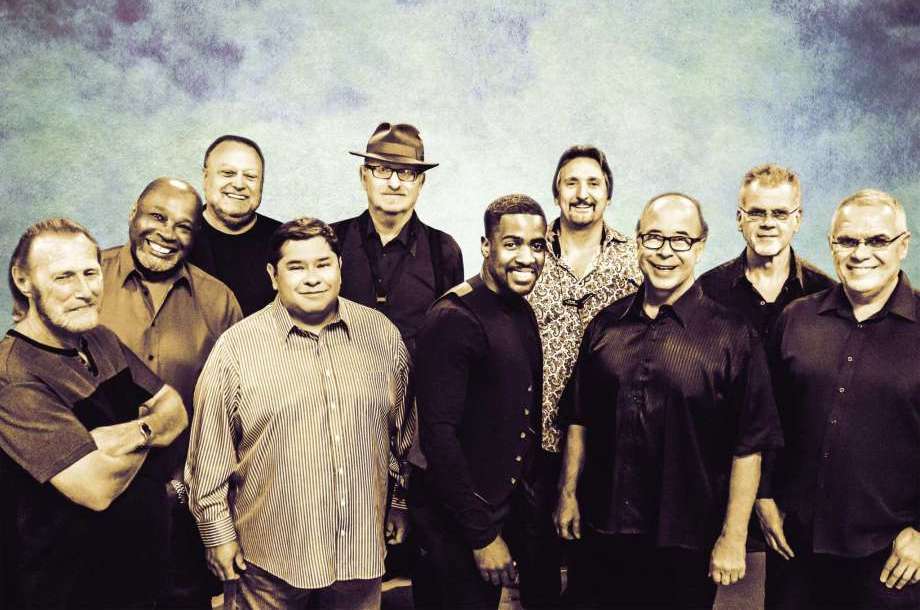Reflections: Tower of Power

A half century after busting out of the Bay Area, the funk/soul collective are still content to sound like themselves.
Most bands that stick around for any length of time pride themselves on their evolution—the goal is to keep moving forward, change up the formula and try new things. For Tower of Power, that’s never been a top priority. As they celebrate their 50th anniversary, ToP 2018 isn’t all that different from ToP 1968. And that’s just fine with tenor saxophonist Emilio Castillo, one of four co-founding members—along with baritone saxophonist Stephen “Doc” Kupka, drummer David Garibaldi and bassist Francis “Rocco” Prestia—still involved with the group.
“We make the music exactly the way we want it to be,” says Castillo. “We don’t chase trends. We had a little period in the late-‘70s when the record companies were trying to get us to be like the other bands. They were giving us a lot of money and we wanted to please them. But even when we tried to do that, we always sounded like ourselves. So I told the guys: ‘Let’s just make the music the way we make it.’ We realized that sounding like ourselves is not a curse. It’s a blessing.”
Soul Side of Town (Artistry/ Mack Avenue), Tower of Power’s recently released 25th album, is consistent with the Oakland, Calif.-based funk/ soul collective’s classic output for Warner Bros. and Columbia Records in the 1970s. The renowned ToP horn section—who have been recruited by everyone from Aerosmith to Elton John, Phish, Little Feat, Santana and numerous others—is still the tightest in the business. And the group’s newest singer, Marcus Scott—who shares vocal duties on the album with Ray Greene, who has since joined Santana—is as soulful as all of those who’ve graced past Tower of Power lineups.
But for Castillo, “the biggest statement, musically, is the rhythm section,” he says. “We did things rhythmically—and we continue to do them—that other bands don’t do. We get inventive with the bass line and with the guitar lines. That’s really, to me, the significant difference in the way we sound. That’s why when they want us to be like the other bands, we couldn’t sound like that. We didn’t do that okeydokey beat.”
The band started out in 1968 as the Motowns, and although gigs came quickly in the East Bay, they knew that they needed to find a foothold over in San Francisco, where the psychedelic-rock scene was in full bloom. Although Tower of Power didn’t sound anything like the Dead, Jefferson Airplane or Big Brother and the Holding Company, they hoped that their solid musicianship and exciting stage show would catch on with audiences across the Bay. With a name change to Tower of Power, the new band found an early champion in Bill Graham, proprietor of the Fillmore West, who began booking them as often as possible.
“Bill Graham had tweaked the collective ear of the Bay Area by having these concerts where you’d see the Grateful Dead with Miles Davis and Sam and Dave,” says Castillo. “Then you’d see Quicksilver Messenger Service and Buddy Miles and Yusef Lateef. He’d have all this eclectic stuff,
and everybody was so open at that time that they were just eating it up. By the time we came around, the whole psychedelic thing had run its course and they were ready for something new.”
Graham signed Tower of Power to his own short-lived San Francisco Records and released their debut album, East Bay Grease, in 1970. A move to Warner Bros. followed and, by the early ‘70s, each of ToP’s new releases—including 1972’s Bump City, their self-titled follow-up, ‘74’s Back to Oakland and the same year’s Urban Renewal—had garnered rave reviews and found their way to the upper reaches of the Billboard album charts. Onstage, funk workouts like “Down to the Nightclub” and “What Is Hip?” and gorgeous soul ballads such as “Sparkling in the Sand” and “You’re Still a Young Man” were drawing increasingly large, dedicated audiences. “Even when things were tough for us, we were always able to play live,” says Castillo.
Now, with a half-century behind them, the ensemble’s only plan is to keep on funkin’. In early June, the band returned to Oakland’s Fox Theater for a two-night anniversary celebration, during which they invited several former members back into the fold. And Castillo is rightfully proud of Soul Side of Town. Six years in the making, the album represents a musical outfit that has rarely faltered and still has plenty to say. “We were due for a record,” Castillo says, “but we’re a working band and we could only get in the studio here and there for the first three years. I was going to record 25 songs and pick 12 killers. It wound up being 28, and they came out so good that the record company liked them all. So we’re putting out two records. The next one is already mixed and mastered, sequenced and ready to go.”
And then what? “I’m going to do it till I can’t do it no more,” Castillo says. “I was touring with B.B. King some years ago and I saw him get off the bus, and he could barely walk. They were helping him get up onstage. But when he got up onstage, he was like a 32-year-old man. He bopped till he dropped. I’ll be doing the same thing until I can’t do it. When I can’t do it, then I’ll stop.”
This article originally appears in the September 2018 issue of Relix. For more features, interviews, album reviews and more, subscribe here.



















